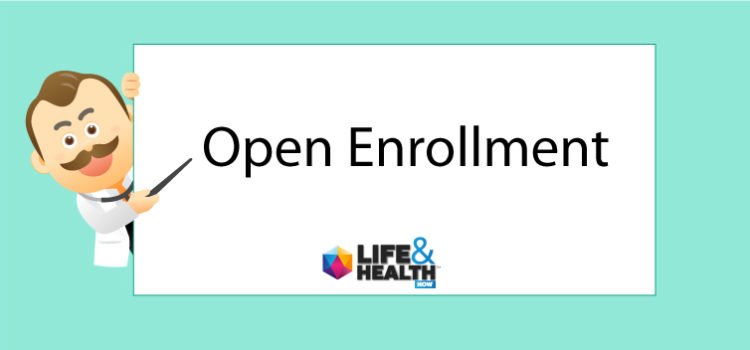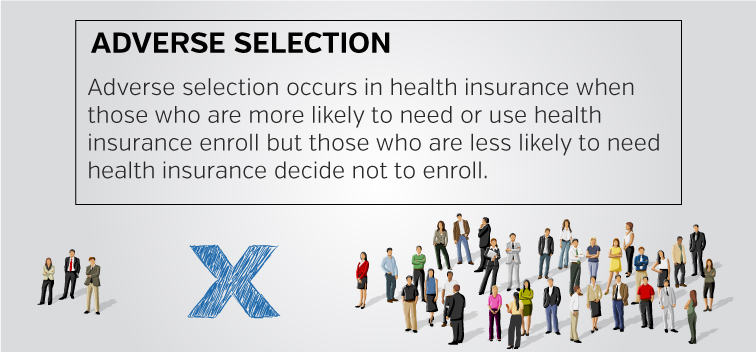What's the point of open enrollment periods?
If you’ve ever been told you can’t purchase health insurance because it’s not the open enrollment period, you may be wondering why would anyone design a business with such bizarre limitations.

Imagine only being able to order a pizza between certain months of the year…that’s kind of weird, right? Sure, we like pizza in November but we also like pizza in July, and March and…well, come to think of it, I can’t think of any month out of the year that I would not like pizza. How about you?
As strange as this may sound, when it comes to signing up or enrolling for Health Insurance, there really are specific weeks of the year when we are permitted to enroll. And if you attempt to enroll outside of this open period, you may just find yourself feeling locked out, and peeking through the windows and wondering, what’s up with this strange industry that doesn’t want to accept my money?
Most recently, our previous open enrollment dates began on Nov 1, 2020 and ended on Dec 15, 2020. You may find there were a few states which extended their open enrollment period and provided some avenues for those who missed the deadline, most did not.
And this is not just limited to enrolling into the Affordable Care Act offered through your state’s exchange, it’s true for most all types of health insurance, including Medicare.
It also includes other situations like, let’s say you choose to not enroll with your company’s health insurance when you were hired, but then later in the year or maybe the next year you decide to change your mind. Depending on what time of the year it is, and the terms of your company’s policy, you’ll likely find that you can only enroll during a very specific time period each year.
Of course, you could get lucky and end up looking into health insurance just at the right time of the year when the open enrollment period is available, but either way, you’ll likely find out that if you miss the cut off date, you’ll be waiting until the next year’s enrollment period.
ADVERSE SELECTION
What’s the point of these restrictive enrollment periods anyway? In theory the restrictions are the insurance companies way of protecting itself from a concept known as, adverse selection.
In plain English, this means the insurance company would have too many sick people and not enough healthy people.
If given the chance to enroll any time of the year they wanted, the idea is that many healthy people would likely take the risk of not enrolling. That would leave health insurance companies with a disproportionate number of sick and unhealthy people (who would most certainly enroll).
Under this scenario, the average cost of coverage would go up and possibly be unaffordable for those who choose to enroll.
Having a limited enrollment period is the way insurance companies “compress” the decision making process into a “limited time offer” situation.
Sort of like the buy one pizza, get a second pizza free offer you get in the mail, but it’s only good on a certain night of the week. This is usually their slowest pizza sales night. Which may be a Tuesday but definitely not on Friday. Who doesn’t like a good pizza on Friday night?
So, just like the pizza shop that needs sales on Tuesday to help keep them open and to pay the bills, insurance companies need healthy people who pay the same premiums as sick people to offset the cost of paying the medical expenses of all of the unhealthy individuals.
Below is an example using a fictitious story to help with the concept. Bear in mind, this is a hypothetical story, but it may help you to get the general idea.
EXAMPLE of Health Insurance Concept:
ABC Health Insurance Company charges $8000/year for each plan member who enrolls into their health insurance plan.
Let’s agree there are 100 members. If each member is paying $8,000 per year, that’s a total of $800,000 collected for the year.
Now, let’s say ABC Health Insurance needs to pay some of their members medical bills.
MEMBER EXPENSES:
• 5 members need an open heart bypass surgery
• 5 members need dialysis treatment
We’ll need some amount to represent the cost of these services, so for now we will assume the cost for an open heart surgery is $75,000, and the annual cost of dialysis care for a single patient is $90,000.
$75,000 X 5 = $375,000
$90,000 X 5 = $450,000
The total cost to cover the member’s medical care is $825,000.
In the real world, there would be additional factors such as deductibles, and other considerations, but for our illustration and to keep things very basic and simple, we will work with broad numbers.
If the company receives $800,000 throughout the year from their members in the form of monthly premiums, but they spend $825,000 paying medical expenses to hospitals and doctors, they will have a major financial problem, right?
We all understand that making a profit in business is key to a businesses long term survival, and insurance companies are no exception.
As we can clearly see in the example above, health insurance companies require a large amount of healthy customers to cover the sick customers.
In our example, it takes 90 completely healthy customers who have absolutely no medical needs for the year, in order to get close to covering the expense of just 10 sick clients. And while our estimated costs of medical expenses are not exact, we based our cost estimates on numbers published by reputable sources.
Let’s take a look at one example as reported in the LA Times.
Heart bypass surgery costs an average of $75,345 in the United States, compared with $15,742 in the Netherlands and $16,492 in Argentina. – www.latimes.com
What can we take away from the above example?
We can clearly see that having a high number of healthy people enroll is very important to the insurance companies bottom line and survival.
By requiring that all customers choose whether or not to purchase health insurance within a limited time period each year, it substantially increases the financial risk for individuals who do not enroll.
We all know that medical emergencies are expensive, and a simple medical procedure could easily cost tens of thousands of dollars out of our own pocket, if we are uninsured. It’s this financial risk that works to motivate millions of healthy individuals to enroll into a health insurance plan. The peace of mind that comes from knowing health insurance will decrease their financial risk and possibly save their life, makes signing up during the open enrollment period a strong incentive.
Maximizing the number of people who do enroll helps the insurance company by increasing their ratio of healthy to sick members.
It’s not a perfect system, but for now, it’s the best option we have going. There are many controversial debates over the best and most optimal way to proceed with respect to health insurance in our country, but no matter how it works out, you can count on our agents to be here to help answer your questions and assist you through the enrollment into a health insurance coverage plan that will work for you.
Speak with a licensed agent today. We're here to answer all of your questions.
Choosing the right life & health insurance coverage for your family is a great way to protect your loved ones. Our licensed agents are here to help. Contact us today to get answers to your important life & health insurance questions.

